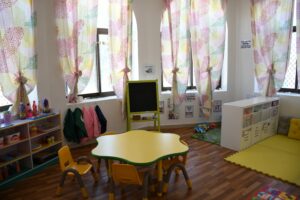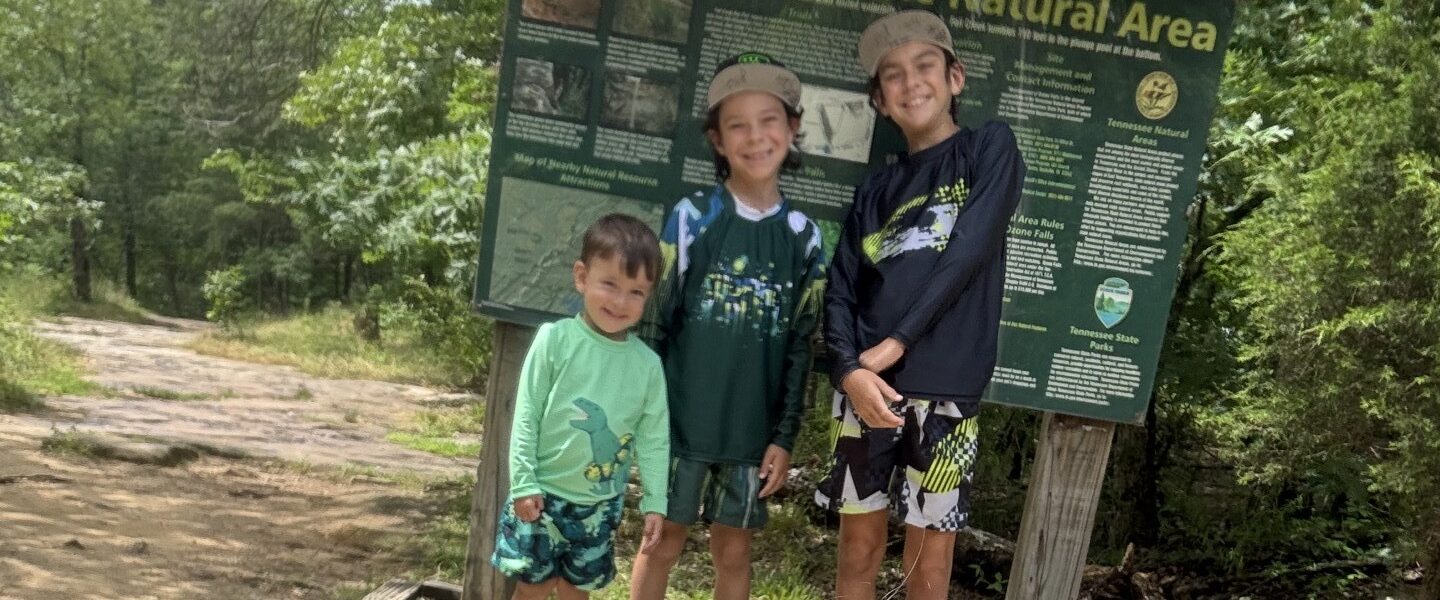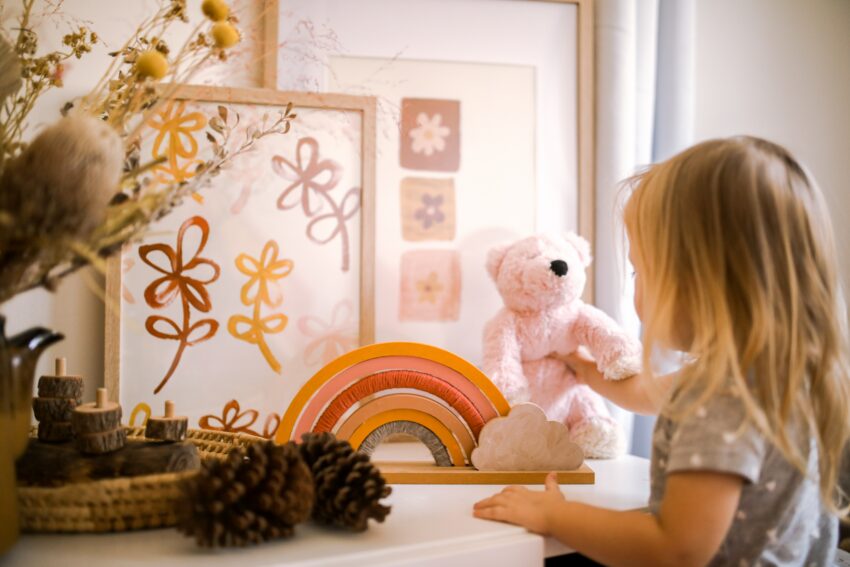We are closing in on playroom perfection through toy organization, phew, I’m exhausted!
Hopefully you’ve now read up on Finding the Right Layout and Every Toy has a Home, because now we’re on to tip 3, so now who keeps up with it all?
Part 3: Teaching Responsibility
Ok, the home layout is done, the storage solutions are defined and working well, so why is the house still such a toy-filled mess?! Because we have now identified problem 3, taking toys out and playing with them is WAY more fun than putting them away again.
Now I’ll admit, I have only survived 5 boys worth of toys because Luis is an amazing closer (see past post if you don’t know what is). At the end of each day, he would always run through the toy room like a hurricane. He just scooped up the various toys, popped them in their bins, put the books back on the shelf and basically made it look like the toy room was never even played in.
Sounds fantastic, right? Not really.
Because he was spending his time cleaning up the boys’ mess, I was on my own fighting 5 boys to take tubs, get into pajamas, finish their homework, and brush their teeth. It’s a big job but I couldn’t complain because Luis was a huge help. So here we are every night, scrambling, stressed, barking at the boys who were blissfully unaware of how hard it was keeping up with them. Was this really the best use of our time? And were we teaching the boys the things about responsibility?
The short answer is no.
The best way to fix this situation was to allow the boys to be responsible for their own belongings, all their toys. But, as you know with any child, teaching responsibility takes time and it’s hard at their age, so you have to make it easier for them, and create an environment that makes it easier to take responsibility than it is to ignore it.
Here’s how we taught the boys to fully own their toy room and why Luis or I haven’t cleaned it in over six months:
Teach Them Why:
Teach them why it’s their responsibility. And I don’t mean the whole, “because I said so” routine. While that does work, I’ve resorted to it a few (hundred) times in my day, I found that getting them to understand was more effective than forcing them to comply. I very easily explained that Mommy doesn’t play with toys and that while I enjoy watching them have fun, I don’t enjoy toys, so they are not important to me. I went on to explain that I will take care of what is important to me, which is the boys themselves, by giving them good meals, making sure they have the things they need, spending quality time with them and ensuring we all get all the love and cuddles we need. And that they needed to take care of what is important to them, and at this age, it’s mainly their toys.
Make it Easy:
 The storage solutions you choose go a long way with in ensuring your children can clean up after themselves. The storage bins, toy boxes and lower bookshelves are filled with all of the toys they can play on their own and they are fully capable of putting toys in bins, placing books on shelves and dumping costumes back into boxes all on their own. With the board games and art supplies, they still may need help but they can do the majority on their own and you now only have to help where they need it.
The storage solutions you choose go a long way with in ensuring your children can clean up after themselves. The storage bins, toy boxes and lower bookshelves are filled with all of the toys they can play on their own and they are fully capable of putting toys in bins, placing books on shelves and dumping costumes back into boxes all on their own. With the board games and art supplies, they still may need help but they can do the majority on their own and you now only have to help where they need it.
Set the expectations:
When I ask the boys to clean up, they know exactly what it means. I have taught them the definition of “cleaning your toys”. To us, it means, putting the toys back in their home (the right bin) and that’s it. Cleaning does not mean stacking toys on top of shelves or cubbies, it does not mean putting books on the game shelf, or throwing items at the bottom of a closet. It is very clean and clear, the toys must be put in the location that they live, and they only live in one location.
Hold them accountable:
If I see a toy get dumped in the wrong bin, or I find a figurine in with the cars, I very politely take it out and state the obvious, “oh no, he doesn’t belong here, I wonder where that one goes?” and gently place it on the floor. This lets the boys know that, while they are responsible, I am paying attention and will hold them accountable. And this method also gives them a chance to do it the right way; it brings them right back to step 3, if a toy is on the floor they are responsible for putting it in its proper home.
Make it consistent:
If I were to ask the boys once in a while, at random times or on random days to clean up, I would get met with groans and push back. So, I’ve created a routine to make cleaning up easy and expected at certain times. Each day before school, the last step before leaving the house is cleaning the toys. This is apriority so I build it into our morning time schedule and make sure we stop play time early enough to give them time to clean up.
Also, each night before bed, the first step of bedtime routine is cleaning up our toys. The boys know that if they don’t clean quickly, they will run out of time to watch TV or play a board game before their scheduled bedtime. This encourages them to clean quickly so they can do what they want. Now, I’m not saying they do it without asking, but when I ask, there’s no groan because it’s just part of the routine.
Conclusion:
That’s it for the top 3 tips for toy organization and what works for us and our family. I say this like it’s a victory, but the reality is that in just a couple of years our dynamics will change, the boys will be older, and we are going to need something totally different than what is working today. If I’ve learned anything, it’s that organization is not something you do once, and you’re done with it. It’s a work in progress every day of your life to always find the best strategy that works for your family right now.
So don’t be afraid to get out there and lay out your spaces, organize your things, hold your children responsible and just LIVE IN IT. Pay attention to how it goes, learn from it, modify what isn’t working, try again, and find what works for you, for right now. It makes for a much happier home!

